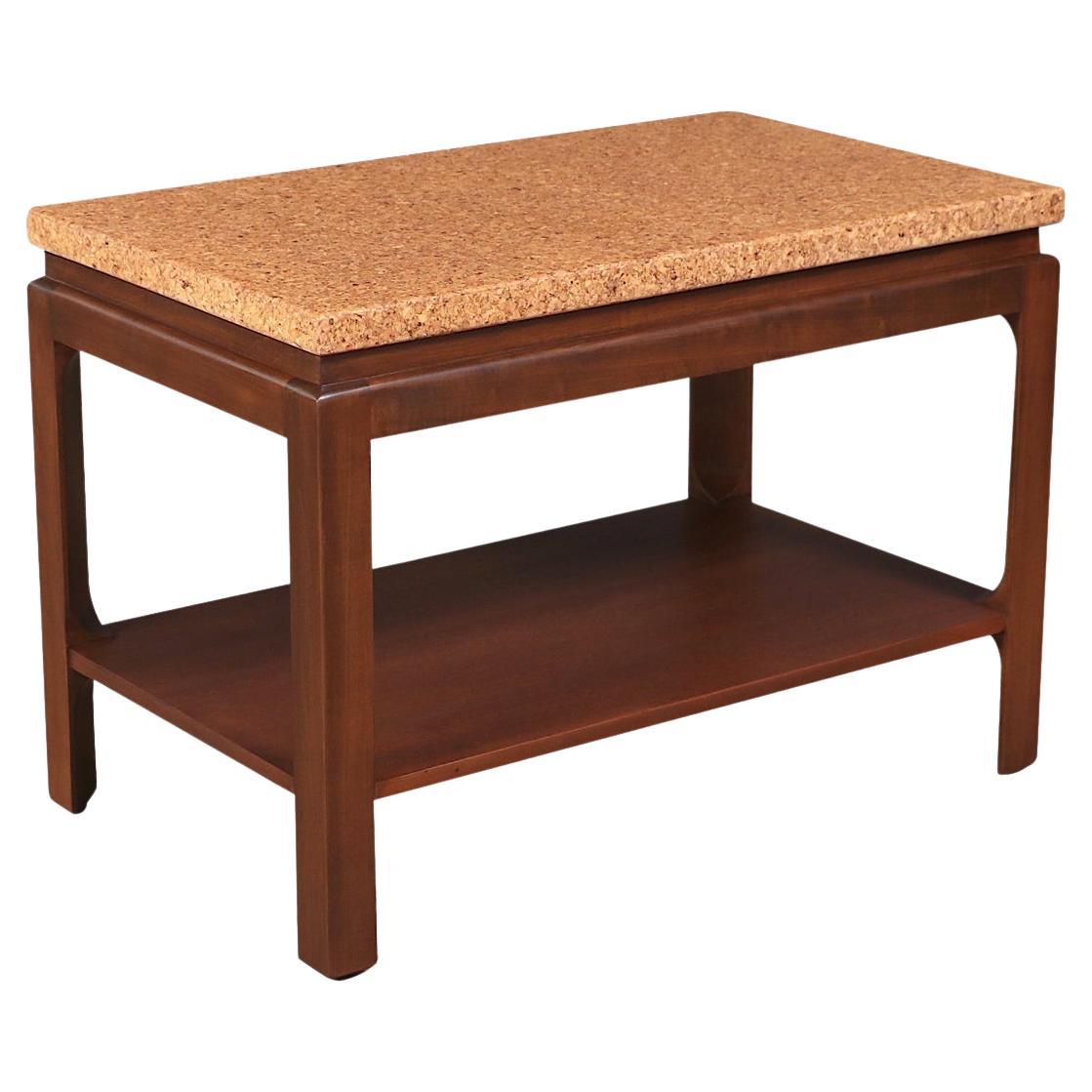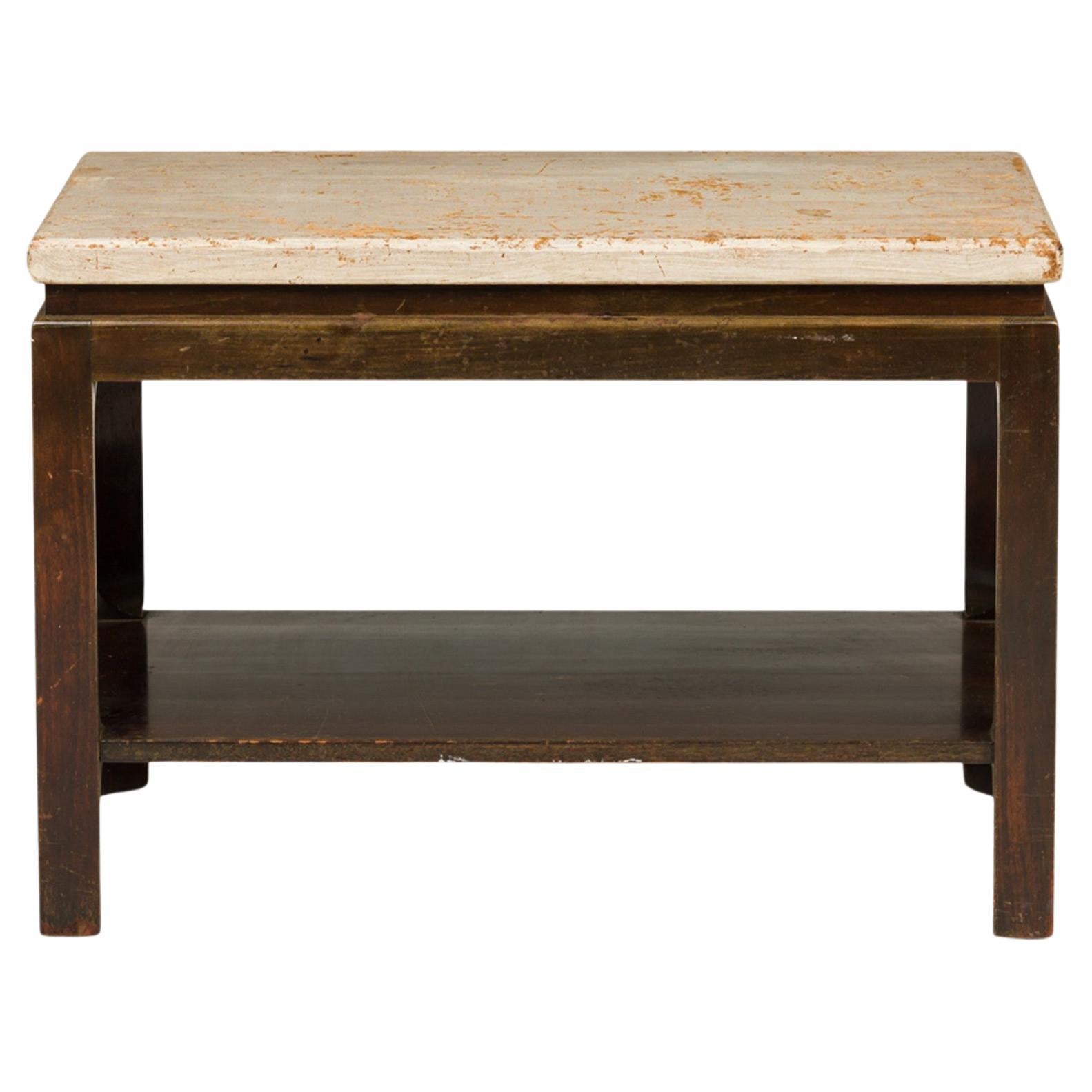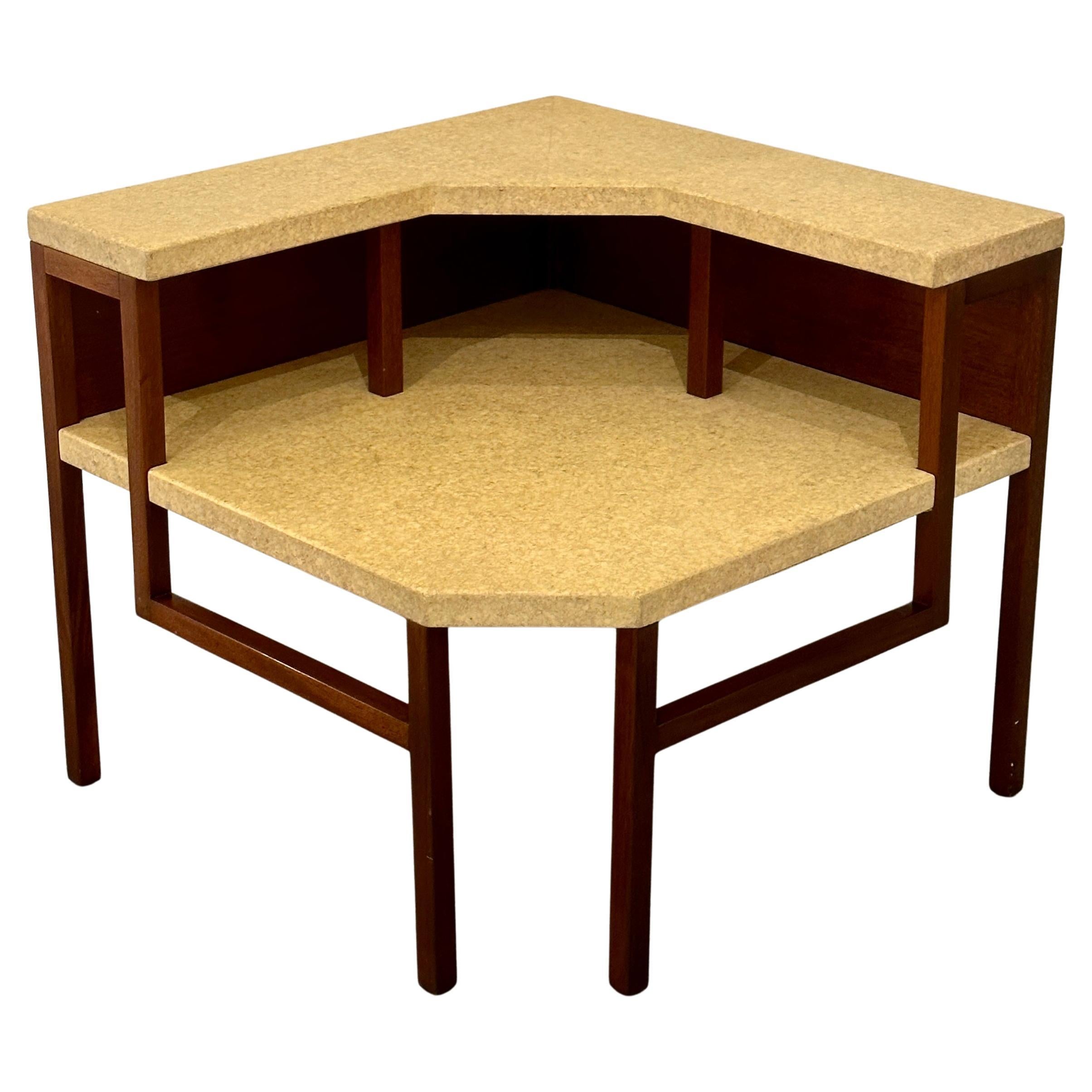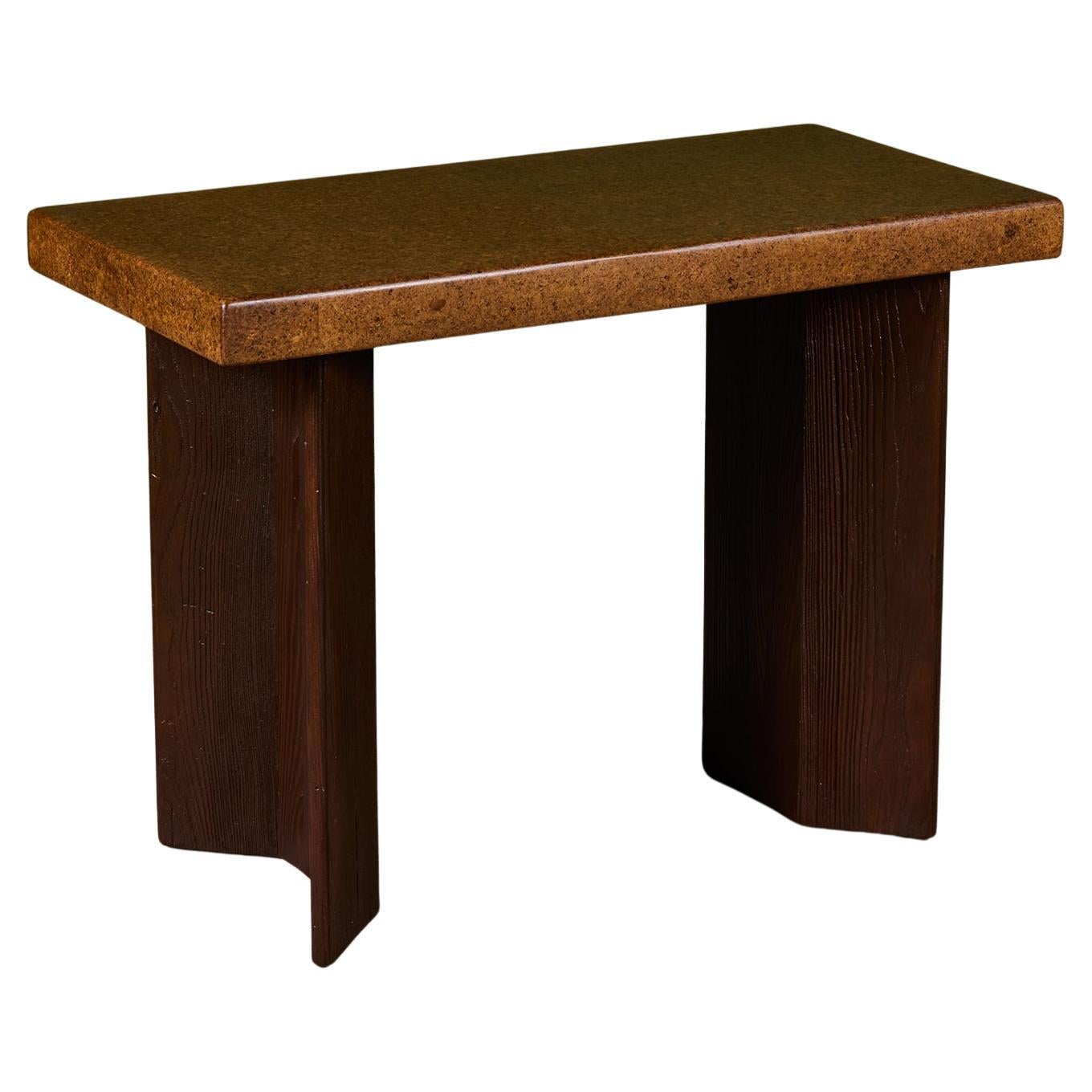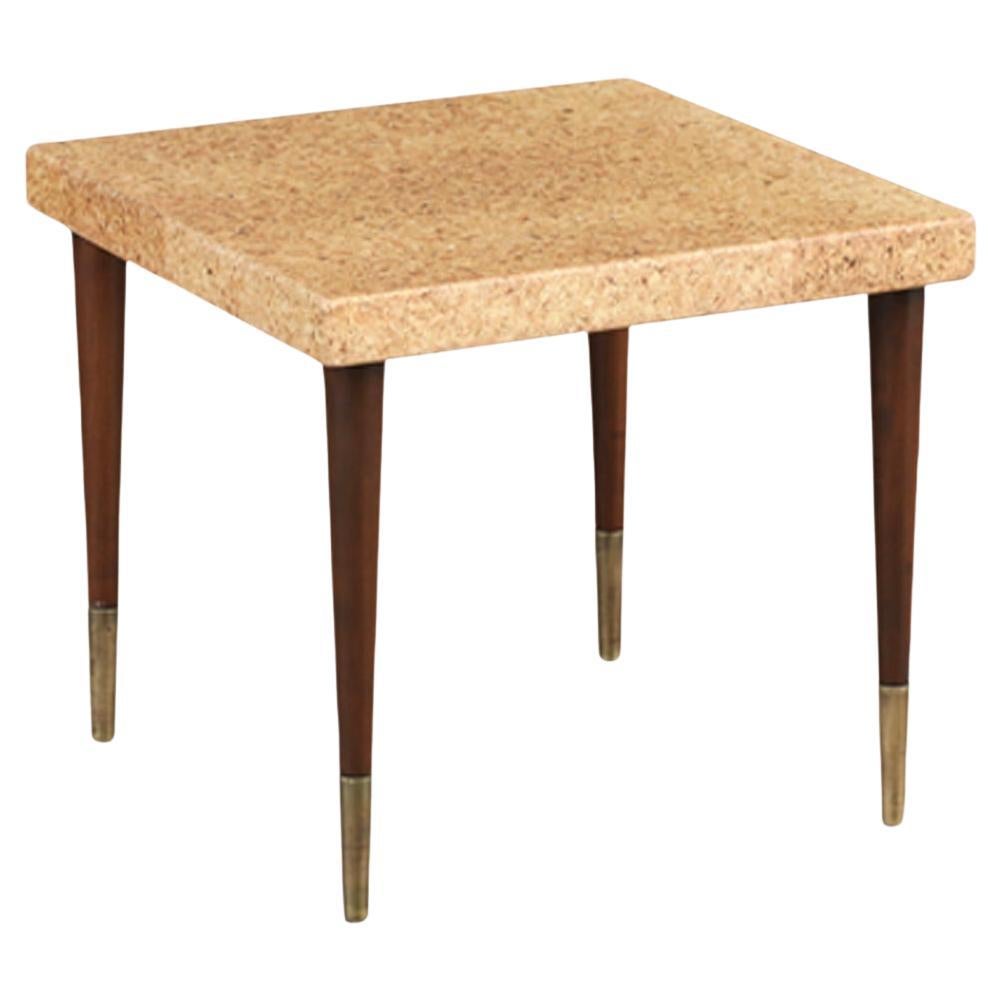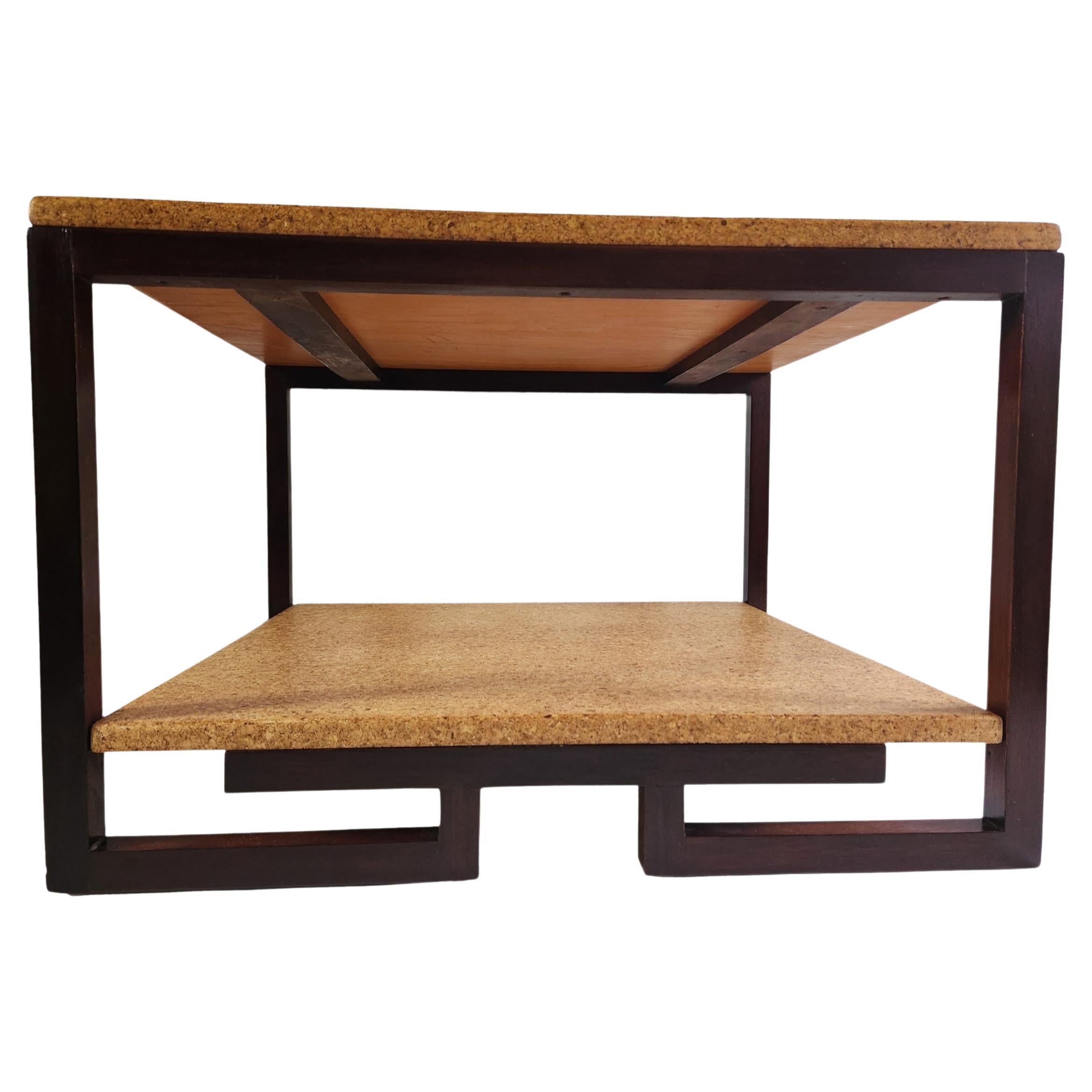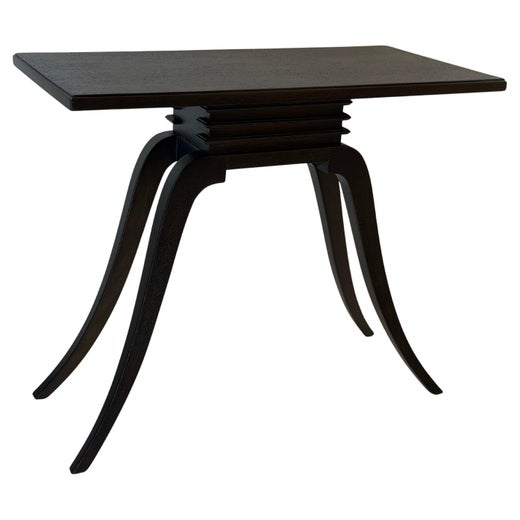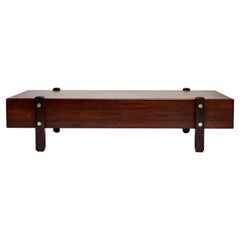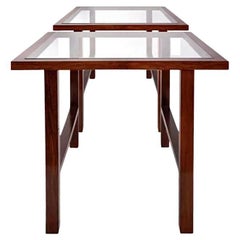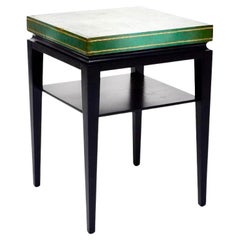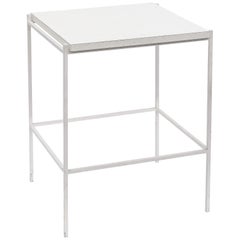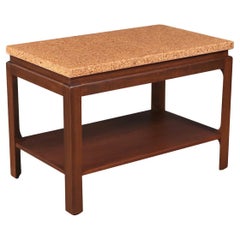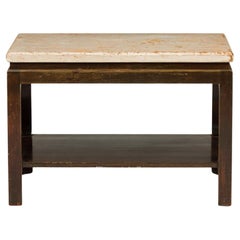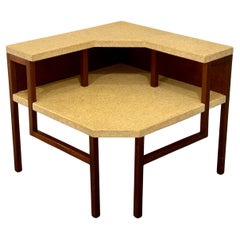Paul T. Frankl Cork and Mahogany Occasional Table, Model 5026, 1948, USA
About the Item
- Creator:Paul Frankl (Designer),Johnson Furniture Company (Maker)
- Dimensions:Height: 22 in (55.88 cm)Width: 30 in (76.2 cm)Depth: 20 in (50.8 cm)
- Style:Mid-Century Modern (Of the Period)
- Materials and Techniques:
- Place of Origin:
- Period:
- Date of Manufacture:1948
- Condition:Wear consistent with age and use. Minor fading. All original. Top surface with small areas of discoloration, few smaller burn marks and approx. 3 losses (largest is <0.5"). Lower areas show assorted finish losses. Lower shelf has some longer scratches, One 1.5" loss to lower edge of foot.
- Seller Location:Brooklyn, NY
- Reference Number:1stDibs: LU4190327585742
Paul Frankl
Born in Vienna, Paul Frankl came to the United States in 1914 as part of a wave of Central European design luminaries — among them Kem Weber, Rudolph Schindler, and Richard Neutra — who were drawn by the energy and optimism of the American scene. Prolific and protean, Frankl would go on to design furnishings that are emblematic of nearly every key stylistic chord in American modernism, from the streamlined Art Deco to free-form organic shapes.
Frankl's Skyscraper cabinets, bookcases and more — introduced in 1924 — are his earliest and best-known designs (and the work by which he is most often represented in institutions, such as New York’s Metropolitan Museum of Art). Tall and narrow, the pieces have staggered shelves meant to mimic the setbacks of Manhattan office towers. A later visually expressive line — the Speed chairs and sofas, which have a raked profile suggesting motion — links Frankl to Donald Deskey, Raymond Loewy and other creators of Streamline Moderne design.
Frankl moved to Los Angeles in 1934 and luxuriated in the climate and lifestyle. His designs became lighter and simpler and found an audience among the Hollywood élite. (Katharine Hepburn, Cary Grant and Fred Astaire were clients.) Fascinated by Asian arts, Frankl produced numerous pieces — tabletops with edges that curve upward; sofas, chairs and other seating with rattan frames — inspired by Chinese and Japanese forms and materials. In the 1940s, Frankl became one of the first designers to incorporate free-form, biomorphic shapes in his work, as well as novel upholstery fabrics such as denim and nubby wool.
Frankl biographer Christopher Long argues that the designer’s easy, elegant aesthetic had an enormous influence on movie set design. As the furniture below attests, Paul Frankl’s work is ready for its close-up.
Find vintage Paul Frankl tables, dining chairs, case pieces and storage cabinets on 1stDibs.
- ShippingRetrieving quote...Shipping from: Brooklyn, NY
- Return Policy
More From This Seller
View AllMid-20th Century Brazilian Mid-Century Modern Coffee and Cocktail Tables
Jacaranda
Mid-20th Century Brazilian Mid-Century Modern Side Tables
Glass, Wood
Mid-20th Century American Mid-Century Modern Side Tables
Leather, Wood
Mid-20th Century Mid-Century Modern Side Tables
Steel
Mid-20th Century American Organic Modern Side Tables
Steel
Mid-20th Century American Mid-Century Modern Magazine Racks and Stands
Wood
You May Also Like
Vintage 1960s American Mid-Century Modern Side Tables
Mahogany, Cork
Mid-20th Century Unknown Mid-Century Modern Side Tables
Mahogany
Mid-20th Century American Mid-Century Modern End Tables
Mahogany, Cork
Mid-20th Century American Mid-Century Modern Console Tables
Oak, Cork
Vintage 1960s American Mid-Century Modern Side Tables
Brass
Mid-20th Century American Mid-Century Modern Coffee and Cocktail Tables
Maple, Cork, Lacquer
Read More
How to Work Rattan and Wicker Furniture into Any Space
Interior designers Celerie Kemble and Angie Hranowsky dish out their advice on artfully bringing these natural materials into today's homes.
How the Anglepoise Lamp Went from Desktop Companion to Hollywood Icon
Since its 1934 debut, the ingenious task light has become one of the most celebrated examples of industrial design.
